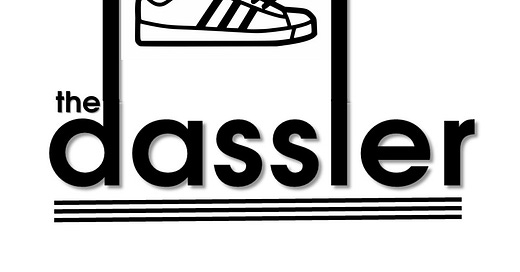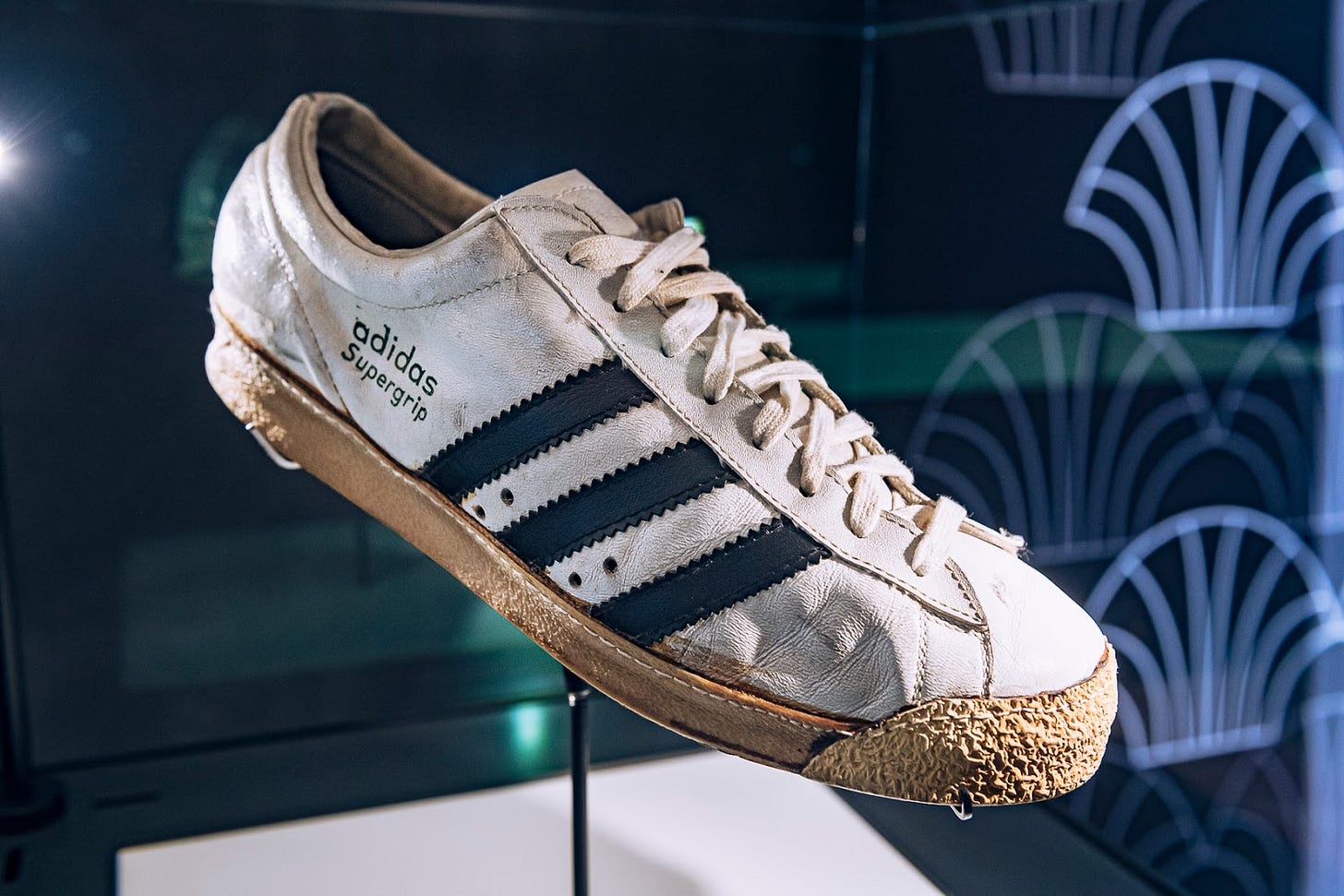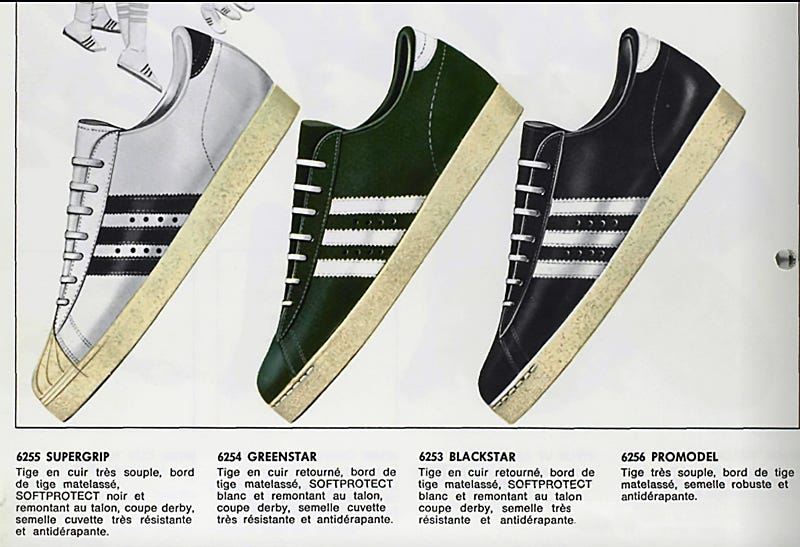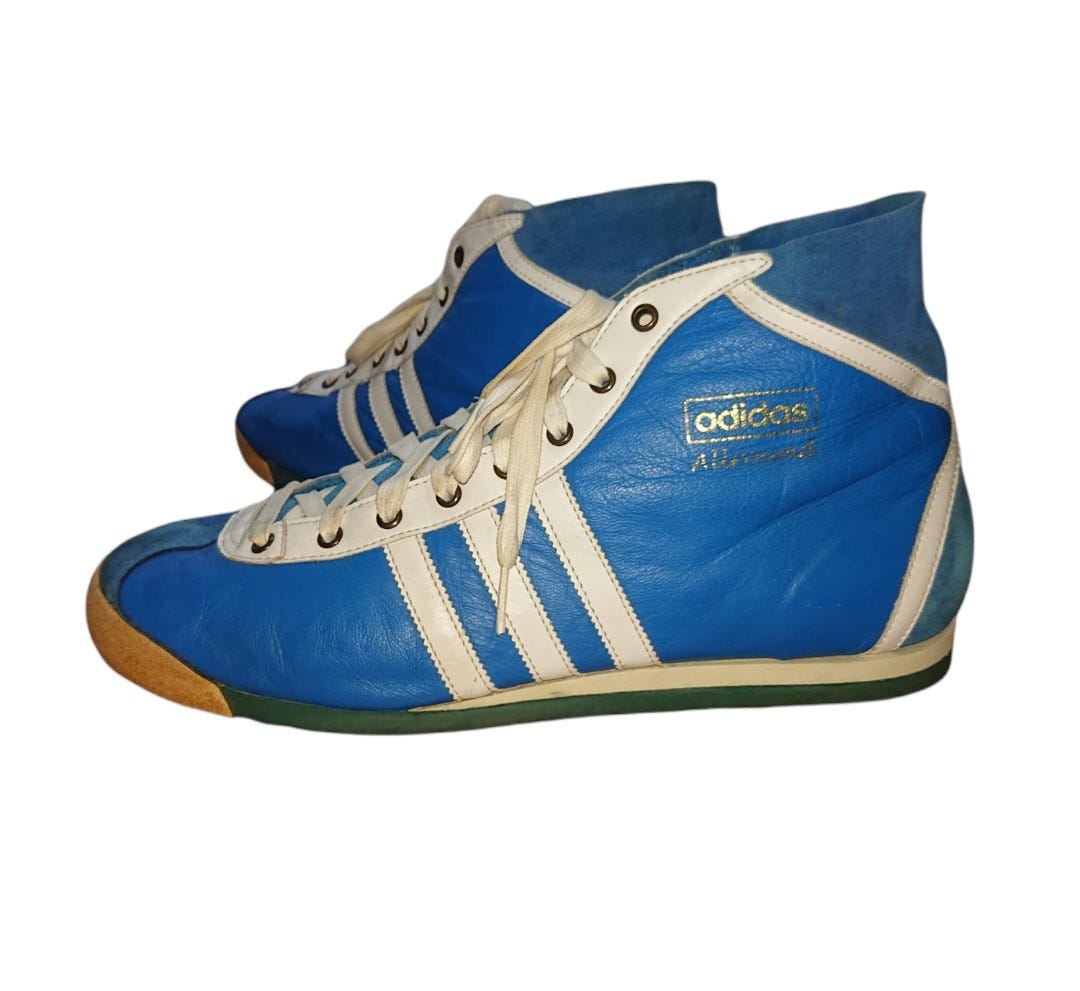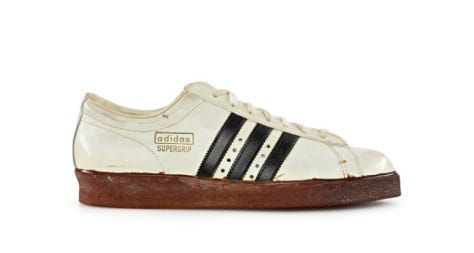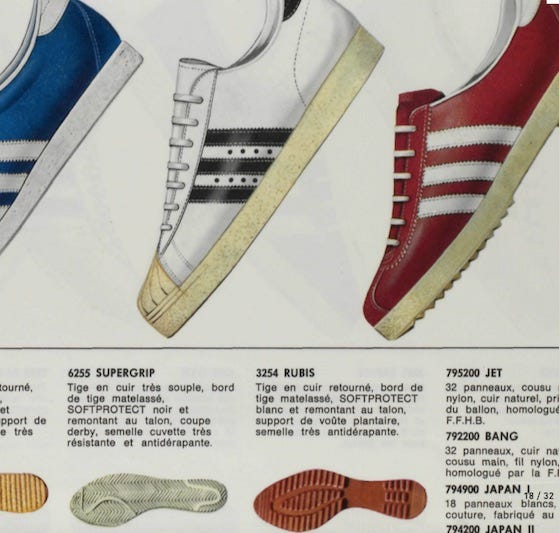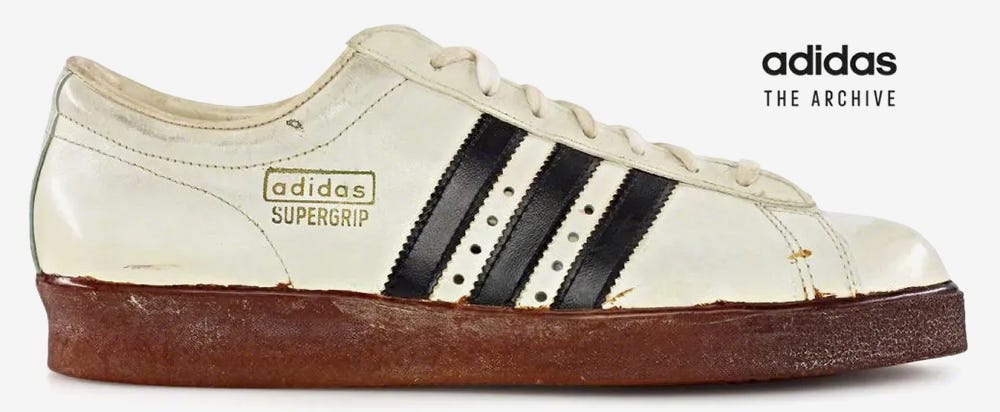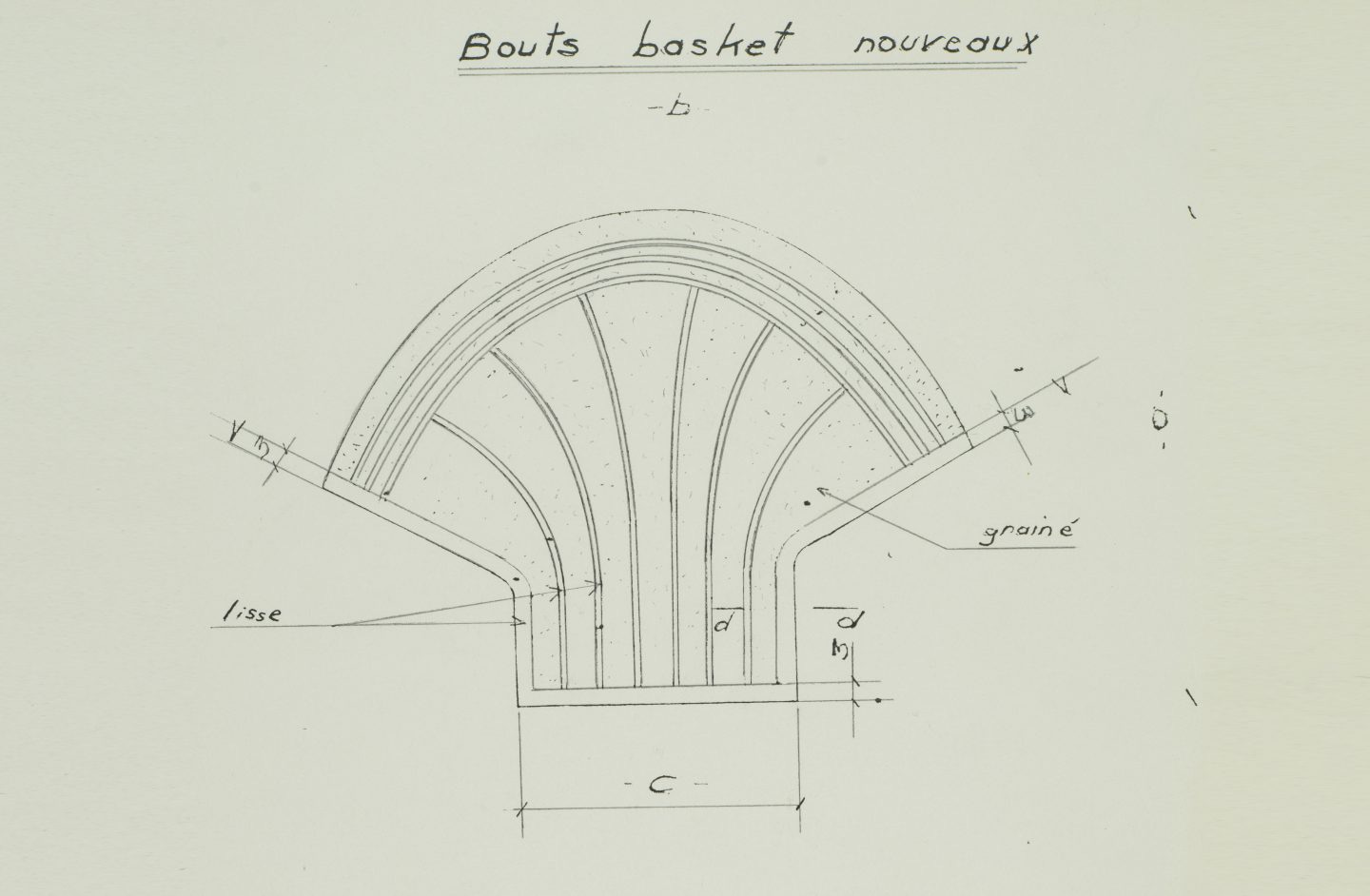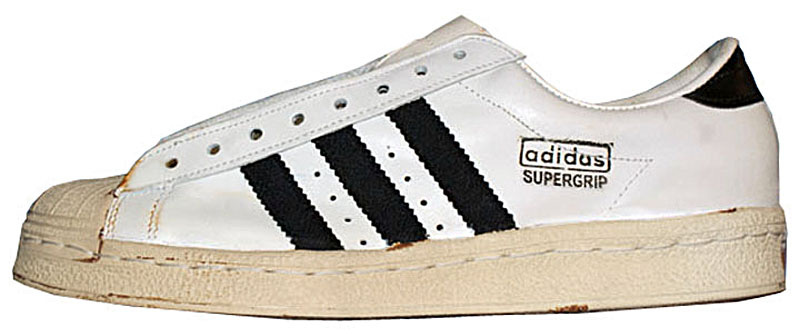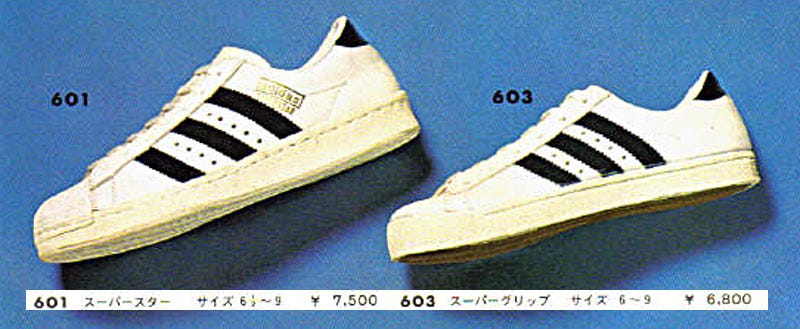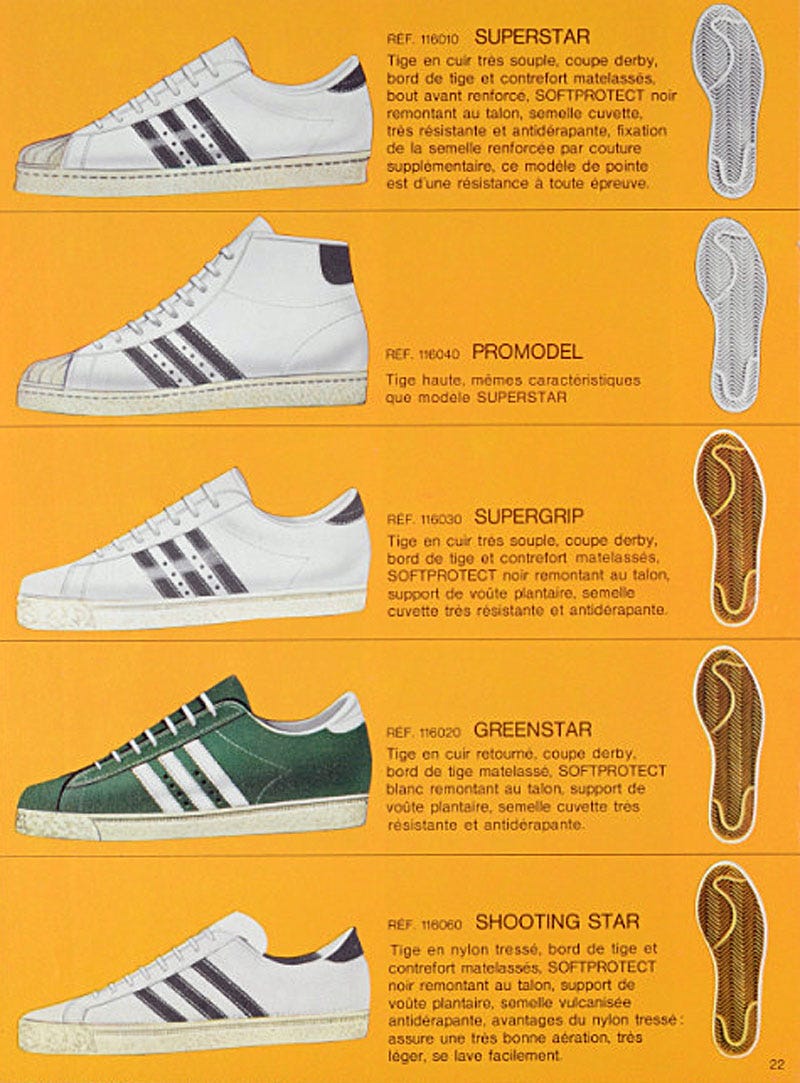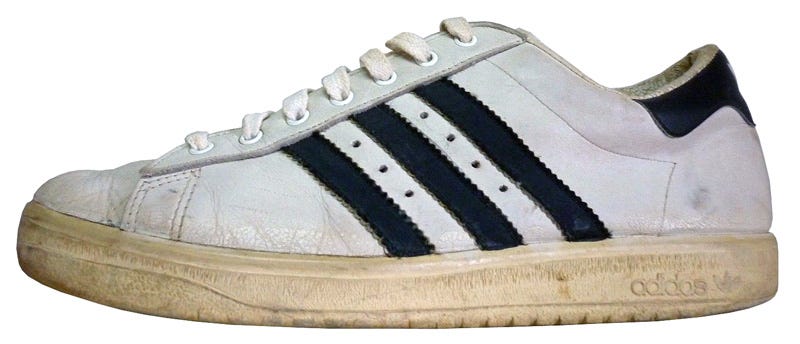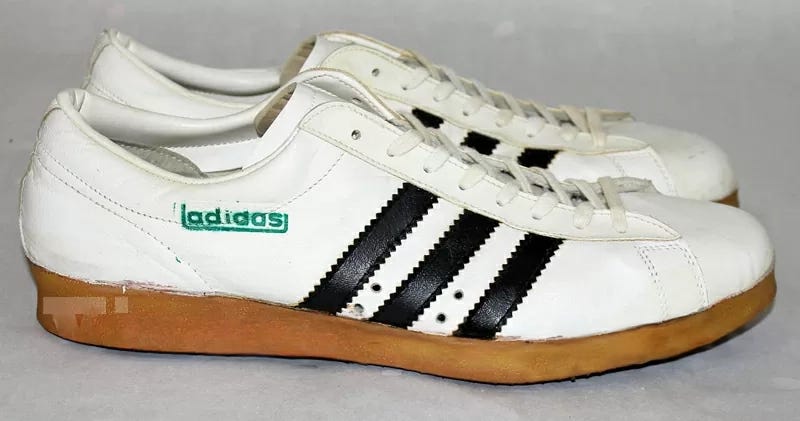The Dassler: Number 36- February 2025. adidas Supergrip, the story of the adidas Rom-Part 2, Superstar 35th anniversary retro review & all the new releases.
Welcome to The Dassler, Thirty-Sixth edition. Read on for enough three stripe goodness to satisfy the most obsessive adidas fanatic.
Welcome to our Second edition of The Dassler in 2025-number 36, the monthly magazine especially written for (and by) adidas lovers.
Thank you for continuing to subscribe to our little corner of adidas heaven.
adidas Supergrip prototype, low top basketball shoe.
The shoe that started the adidas Basketball legacy. (yes we know there was the 1960 adidas Allround but the Supergrip is the direct descendance of the adidas Superstar)
adidas-always learning!
The Dassler usually comes out on the Third Saturday of each Month-to take your mind off spending all your money on adidas and give you something to do while waiting for the end of the months pay day!
In this edition in our ‘Retro shoe of the month’ we share the City Series OG -the adidas Rom-Part 2. Woody retro reviews the Superstar 35th Anniverary release back in 2005, Craig shares another of his adidas adventures this time adidas EQT. We also have another adidas history lesson-this time we explore the OG Basketball trainer the adidas Super Grip and Craig again reviews the latest adidas releases.
A massive three-striped thank you for subscribing, it takes a lot of hours to research, write, source and edit The Dassler and your support is very much appreciated.
If this is your first visit then we’d highly recommend you run over to the very beginning (obvs wearing a pair of OG colourway adidas ZX600’s)to our earlier issues here.
This is a monthly newsletter, that will contain ultra rare deadstock trainers, new adidas releases & brand exclusive information from 3 stripe social media giant Craig (@adifamily_ *X & Insta*), adidas oddments & apparel reminiscences written by Woody (@dadidassler *X* & Insta) plus loads of articles from special guest writers and we have some absolute adidas legends as guest writers lined up!
adidas Supergrip
Without the Supergrip we would not have the Superstar.
Adi Dassler created adidas as a place to innovate and design shoes as equipment for athletes. The German location and basketball’s niche status in Europe during the brand’s early days meant that while you might see a deeply specific winter sport shoe, basketball nets and backboards weren’t necessarily part of the plan. So how did the adidas Supergrip evolve into the Superstar?
Most trainer afficiendos who study the heredity of their favourite adidas shoes, knows that nothing appears from nowhere. A cursory glance at the state of trainers 60 years ago indicates that adidas weren’t even making basketball shoes until 1960, but the story runs a little deeper. Bear in mind that, in post-war Germany, there was an American presence, that meant that a brutal-looking training shoe like the 1949 Trainingsstiefel boot became popular with the Yanks when it came to their game of choice-basketball. The hi-top adidas Allround training shoe from 1960 was also sold as the Allround Basketball around 1961, typical of the time, many designs were sold as multi purpose trainers.
Trainers of the era were purely for their purpose and as a result, would be altered in line with new material technologies or discoveries. adidas was already experimenting with reinforced toes on tennis shoes because of the drag during play , morphing from the rubber-toed adidas Tennis, the Wilhelm Bungert signature shoe that arrived around the same time as the Super Grip as a similar concept for a different kind of court, and the cult Tom Okker design also would use a similar rubber wrap.
adidas’s technical heavy early forays into basketball took a backseat to the groundbreaking running and football creations of the 1960s, but a French catalogue from 1968 includes an early sighting of a future classic — an illustration of a Supergrip with a familiar ridged rubber toe, in the handball and volleyball part of the publication (but with the same stitching as a regular 1967 Supergrip). When the leather-tongued Superstar debuted (the name of the shoe’s original designer remains a mystery) and was tested by elite athletes in 1969, it brought the Supergrip’s ‘SoftProtect’ padding and soft leather, but the adjustable arch support, extra-large heel counter and shell-sole were pushed as selling points. The rugged rubber toe cap to take the abuse of stop and go movement looked unique, with ridges possibly added as a point–of-difference from other toecap creations.
Since basketball’s canvas and rubber early days (Hello Converse!), the toe was covered to prevent the shoe being wrecked almost instantly, but adidas applying it to the already resistant leather was something new. The Supergrip was still in catalogues, but retired to high school and college use with a budget price and a newly vulcanised, rather than stitched sole (it was sold alongside the vulcanised Greenstar basketball shoe that would evolve into the stitch soled Jabbar-endorsed Tournament shoe that would become the Campus , not to be mistaken with the late 1970s training shoe of the same name, in the early 1980s).
But how did the Super Star emerge like a wonderous butterfly from the Super Grip cocoon?
In 1963 adidas Supergrip prototypes were sent back and forth. Then, a breakthrough – the circumferential seam. Combined with a molded sole, the shoe was responsive and capable of withstanding the start-stop demands of the court.
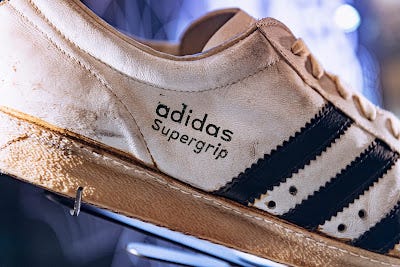
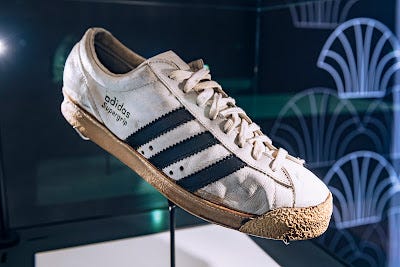
The basketball shoes Supergrip and Promodel were developed by adidas France and launched in 1965. They had features that will eventually become defining characteristics of the Superstar. But for four years the Super Grip did not have a shell toe protection.
At the time, Adidas was competing with Converse. The high-top sneakers were the choice of basketball players from amateurs to professionals, but they were made entirely of canvas and did not grip the court well, which led to regular ankle and knee injuries. Adidas consultant Chris Severn and the design team sought to make all-leather trainers instead of canvas, as leather provided a tighter fit than canvas, giving players additional protection. The new shoes had a distinctive shell toe cap and a herringbone pattern of fine grooves on the sole with Adidas' signature three stripes on the sides.
By the end of the 60s, the Supergrip features a reinforced shell toe and herringbone outer sole.
But then someone at adidas must have made a marketing decision. Because in 1969….
The Superstar was introduced in a 1969 catalog, and was available in two models, the Supergrip and the Superstar. The Superstar became the model with the ‘Shell Toe’ and the Supergrip was released without it.
Note the difference from the 1968 adidas catalogue at the top of this article. In just one year can you see that the adidas Black Star is gone with the Shooting Star is in its place. As you can also see in the 1969 catalogue, the model with the shell toe is called SuperStar, and the model without the shell toe is called SuperGrip. In other words, you can tell from the shape that the adidas SuperGrip has changed into the SuperStar.
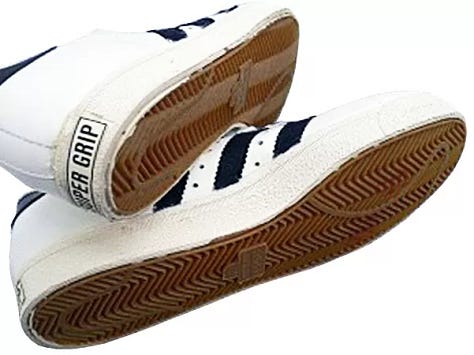
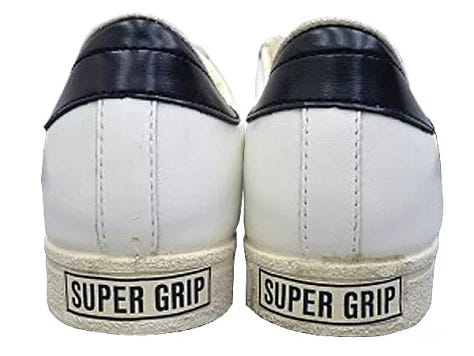
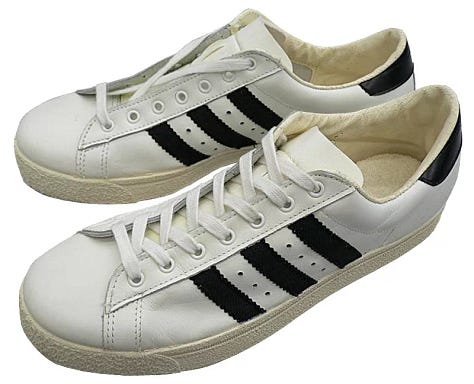
Here is the actual 1969 Super Grip. There is no shell on the toe. The heel has the words SUPER GRIP printed on it, just like the Green Star and Shooting Star. The sole is not white, but a brown tournament sole. The tournament sole was created in 1969 and was used on the Green Star and Shooting Star. In the 1970s, the Green Star's sole became the same as that of the Superstar and changed into a colored suede version of the Superstar.
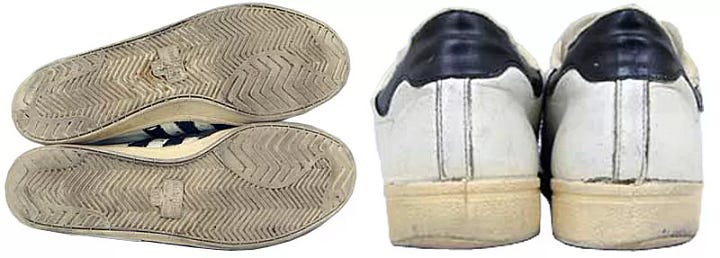
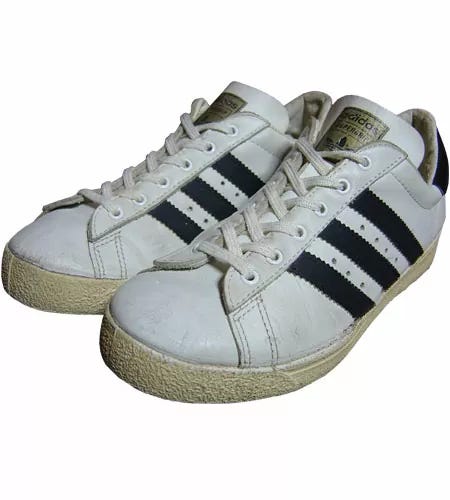
In 1974, the tongue label became gold, just like the Superstar. Detailed stitching was added to the gold tongue motif. The name was also added to the tongue label, note that the model name on the side was no longer included.
This is the 1981 adidas Supergrip-the last version. The sole pattern has changed. Note that the Adidas logo was not printed on the side of the sole until 1979. This is an effective way to tell what era’s any adidas trainers are from.
By the early 1980’s the adidas Supergrip was fading away (ironically the Superstar would start to become the iconic trainer it is today -heavily influenced by the burgeoing Hip Hop scene in america).
We can definitely say that without the adidas Super Grip there would be no Super Star.
We’ll finish with a bit of adidas history and knowledge-This is a 1962 model low-cut indoor shoe made by Adidas in France. Unfortunately, the model name is unknown, but it is a prototype of a low-cut basketball shoe made by Adidas in France and brought to the NBA by Horst Dassler (Adi’s son).
The shoe only has Adidas written on it, no model name. (Probably a prototype and not sold commercially)...
Note that Adidas basketball shoes made in West Germany were high-cut leather shoes, so this is the first low-cut specific basketball shoe adidas ever made.
Finally in 2020 almost 40 years since the last adidas Supergrip was made adidas Originals re-released a Consortium version of th 1965 OG, shelltoeless version of the Supergrip.
Keep reading with a 7-day free trial
Subscribe to The Dassler to keep reading this post and get 7 days of free access to the full post archives.


